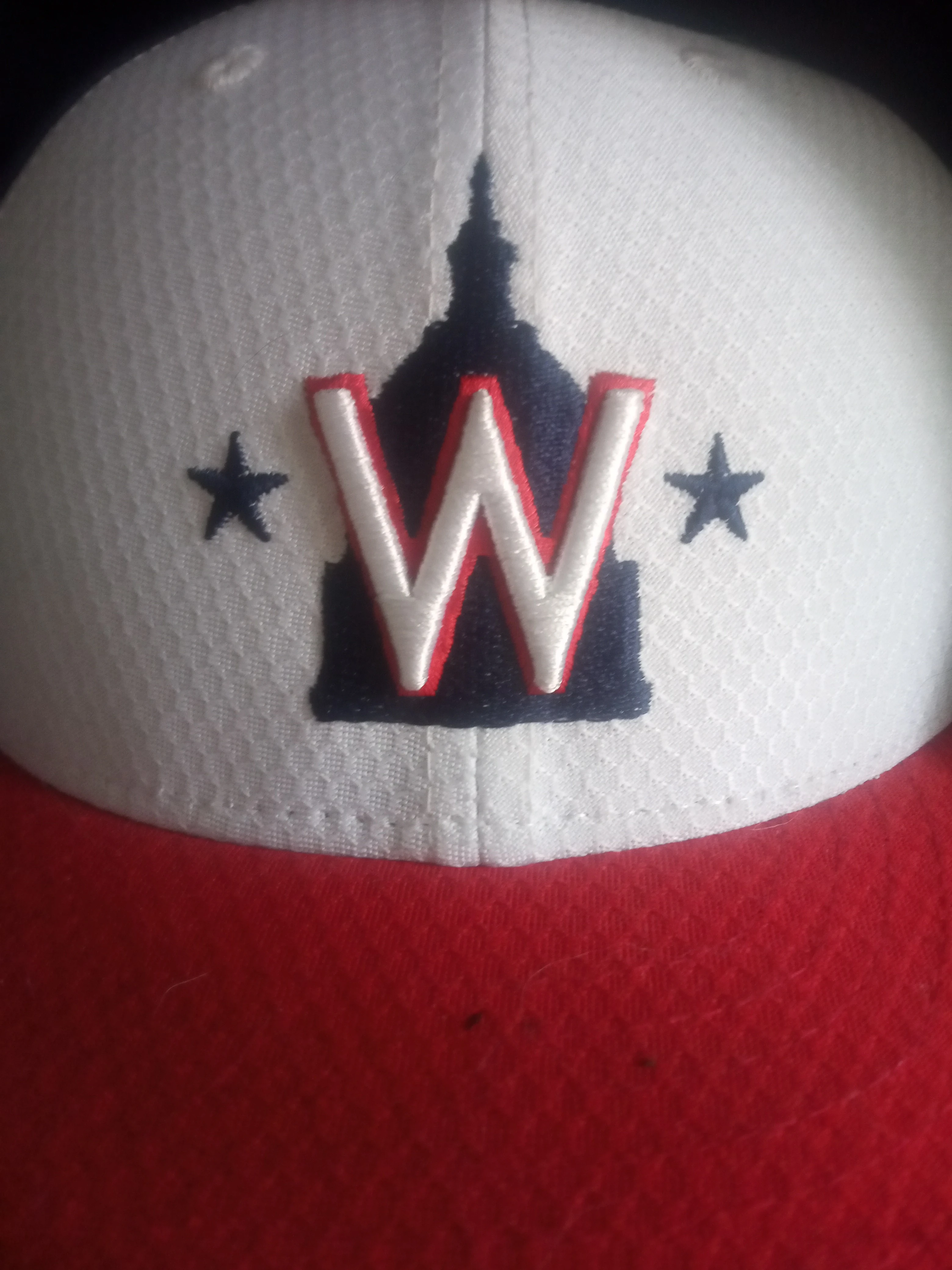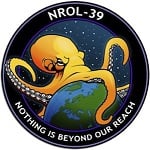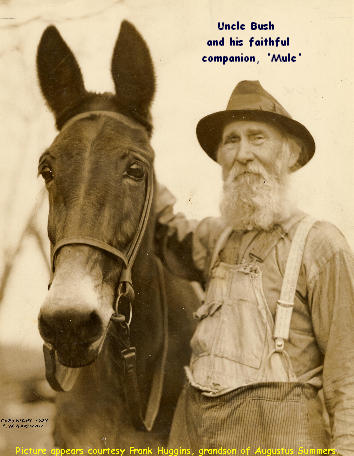May I present to you, how to measure like a Brit

It’s great fun especially when you’re trying to work out how fuel efficient your car has been when your tank and fuel pump is in litres and the fuel efficiency is in miles per gallon.
Oh and you’ll have a jolly time following a recipe from more than 20 years ago trying to remember what the hell “Gas Mark 4” is in centigrade for fan or convection ovens.
Oh and my personal favourite for the industry I’m in: when designing a PCB your component sizes will use imperial codes, your wire diameters will be in AWG, your track widths and PCB dimensions will be in millimetres, but your copper thicknesses will be in ounces despite the final weight for the assembly will be in grams.
Canada has a similar chart, with some fun modifications. For example, distance could be feet/inches, millimeters/meters/kilometers, or minutes/hours, depending on what you are measuring.
As an Indigenous Canadian … when someone asks me where something, someone, some town, some location, the sun or a celestial object is located … I turn my head and point with my lips.
And my distance measurements are usually answered first by asking ‘why?’ … and if they give an acceptable response, I’ll tell them the distance is either … ‘not far’ … ‘far’ … or ‘very far’
I turn my head and point with my lips.
TIL that this is a thing in Indonesia.
I still have some doubts. https://m.youtube.com/watch?v=BeIUsyoAoLsI’ve also learnt to point with my lips. It’s pretty handy.
Thank you for posting this. So sick and tired of people saying that GB switched to Metric.
This! That stupid map that just shows the US and Burma always annoys me. The US customary system includes Metric units. Canada and England still use Imperial/Customary. And “Metric” Is actually like 5 different systems with similar features like ANSI/ISO, KMS/CGS, and the three different pressure measurements.
Natural units >>> Metric I want an alternative to Metric that uses base 12 units instead.
I want an alternative to Metric that uses base 12 units instead.
Right?! I have been saying that for years! It really pisses me off that we evolved with 5 digits on each hand instead of 6. It’s clear evidence against the the idea of intelligent design.
Cont on finger sections or knuckles, like some cultures do. Gives you 12 on one hand, using the thumb to count.
Or 16 if you choose your reference points right.
But we still have a number system where 10 is the sum of 5+5.
I want a number system where 10 is the sum of 6+6, and 12 is the sum of 7+7. A number system with two more single-digit numbers: one representing the sum of 6 and 4 as a single digit; and another representing the sum of 6 and 5. A system where 10*10 is 100, and 100 is the product of 6 * 2 * 6 * 2. A number system where 10 is evenly divisible by 2, 3, 4, and 6.
A metric system developed from that number system would be stunningly gorgeous.
You mean base 12.
Of course. But I’m saying it in such a way that doesn’t require the use of numbers in a base that is the product of 2 and 5.
In any given number system, the base of that number system is 10.
I’m curious how you could make that work as it’s a basic contradiction. For 6+6 to equal 10 6 couldn’t equal itself which makes the entire premise invalid.
If you want more single digit numbers hexadecimal aka base 16 is even better than 12. But I can’t see how 10 can be evenly divided by all of 2,3,4,6 without being a multiple of the set.
I think they just mean base 12. So “10” isn’t ten, it’s 1 * 121 + 0 * 120; xyz is x * 122 + y * 121 + z * 120.
Like sixteen in hex is 10 (commonly written 0x10, to differentiate it from decimal 10)
Edit: oof, my client is trying to be clever with the mathematical writing and bungling it, I’ll try to fix… Hmm, hope that makes it better not worse
In duodecimal, 10 is, indeed, the sum of 6+6. Add up 6+6 in your number system. The number you reach equals “10” in the number system I described.
Hexadecimal is a wonderful base, as it is the composite of 2 * 2 * 2 * 2.
But, it does not allow for even division by three or six, and that is a problem. The simplest regular polygon is an equilateral triangle. The angle of an equalateral triangle is 1/6th the angle of a complete circle. Hexadecimal cannot represent 1/6th of a circle without a fractional part. Geometry in hexadecimal would require something like the sexagesimal layer (360 degree circle) we stack on top of decimal to make it even remotely functional.
Duodecimal would not require that additional layer: The angle of a complete circle is “10”. The equilateral triangle angle is “2”. A right angle is “3”. A straight line is “6”.
With duodecimal, the unit circle is already metricated. Angles are metric. Time is metric.
Let me put it a different way: Our base is the product of 2 and a prime number. A 12-fingered alien who came across our decimal number system would think it about as useful and practical as we think of base-14, another number system with a base the product of 2 and a prime number.
According to this chart, goat milk is vegan 🤔
Goats are actually malevolent vegetables.
That makes sense. I mean, bees are fish, so…
It’s because we’re stuck with a bunch of twats who can’t let go of the past. They’ll stick with Imperial measurements, mostly because the word looks like “Imperialist” and that’s the side they want to be on. Jacob Rees-Mogg is a wrought-iron dildo.
A similar chart could be made for the US, proving that it does use metric: soda and wine bottles, medicine doses, eye-glasses measurements (in fact most medical things).
I think that both systems are used in schools now.
But then I see cooking instructions for a “cup of chicken strips” and a recipe having 1/4 cup of butter, and I wonder why anyone thought that volume was a good idea there.
If it’s medical, over 12%abv, or 2L of soda we use metric. Or related to spaceflight after the incident
Butter comes in sticks that are 1/2 cup. So half a stick is 1/4 a cup
True, but that’s just replacing a cup with a length, and rules out using an existing tub.
Why not use weight, which is easy to measure and tolerant of different forms/shapes?
Butter in a tub usually isn’t pure butter as they add oil to it to make it spreadable when cold.
Recipes that call for butter are normally designed for true/pure butter and may not cook or bake properly if spreadable stuff is used. (there is however Amish rolled butter that’s sold in big ‘loaves’ where measuring can be annoying)
Unless you need to measure it in grams then it’s super simple!
Weight requires a scale. I don’t know a single American who has a scale in their kitchen.
This sounds like a catch-22 problem.
Maybe scales could be improvised, with a stick, some cups, and awkward-shaped chunks of chicken in one of the cups.
Or, we just use volumetric measurements, despite the slight variations they introduce when you cram pack flour into a cup instead of gently scooping the sifted. It’s a kitchen, not a laboratory or a factory.
My first example was “a cup of frozen chicken strips”.
I know I can make a guess how much they mean, but I could easily be off by a factor of 2.
It really wouldn’t be hard to have the weight listed.
Since volume is equivalent to metres cubed and distance is equivalent to metres (both multiplied by some conversion coefficient), I think fuel efficiency should be measured in metres squared, because why not.
This is a correct unit for it. Why? Think of it like a tube where as you move along it you use up the fuel. Over a set distance you would use more in a lower efficiency vehicle. Since the length of that pipe is the same, then the change would be the area of the ends of the pipe. Thus fuel efficiency is an area, smaller is better.
(Yes, the “bird poop” one is correct, it does talk about fuel consumption too).
I mean, you are correct in that there is an actual physical interpretation for it
But square inches, because come on.
your track widths and PCB dimensions will be in millimetres
Not milli-inches? Is this a UK thing or have PCB design evolve since I last touched it?
Anyway, milli-inches is one of the funniest unities I’ve used.
We call them thou.
Or mils
Yeah, thou is industry standard. Never heard of mili inches
Yeah, even though that unit is a thousandth of an inch, it’s called mils rather than milli-inches.
Dost thou indeed?
Beware he who thous the thou.
The only part I disagree with is stone/pounds for people’s weight. Although we use stone, I’ve never heard someone use pounds… Maybe if you’re in Weight Watchers or something, but otherwise it’d be rounded to the nearest half a stone (e.g. 9 and a half stone)
Yeah, it’s common talking about babies birth weight but that’s about it.
I’m 14st 13lb. Nowhere near 15 stone.
Short distances should be meters, feet, inches, millimetres.
None of that fractions of an inch bollocks.
And milk is often actually in litres and half litres, we just assume it’s in pints. Clever little bit of shrinkflation.
fractions of an inch bollocks
my condolences
Short distances should be meters, feet, inches, millimetres.
American machinists go a different way altogether: thousandths of an inch. So no binary fractions, but still imperial-ish. :/
And milk is often actually in litres and half litres, we just assume it’s in pints.
That one makes sense.
There’s also a difference between imperial miles and nautical miles, though I’m not sure if British long distance ships use nautical miles or not.
Aviation uses nautical miles across the western world.
deleted by creator
How about breast milk? It is neither cow milk, nor vegan milk…
Isn’t it vegan if it’s sourced by consent?
Presumed consent is not consent. We cannot assume it was consensually sourced.
Like the steak in the restaurant at the end of the universe?
consent is not mentioned in the vegan society definition.
Measure in ml if it’s outside, or g if it’s in the baby, I think.
Or cup size, if still in the source container.
Can you measure something like, D-C–cup milk since the total volume isn’t all milk?
Guesstimate based on the feel of it… I think a scientific study is warranted and I volunteer to help guesstimate.
All right, but we’re doing the study on rats as per usual and extrapolating to humans. Please turn up at the lab Monday 9am sharp.
But what if it is horse milk?
Cubic hands?
How about spherical feet?
Yes. Calculating how much a car journey is going to cost is such a chore. Trip in miles ÷ mpg × 4.5 × £/litre of fuel = cost.
You forgot that inside temperature is in Fahrenheit, outside is in Celcius.
No it isn’t, I rarely see fahrenheit in the UK
Old people who still remember old money
How old are you? Even my parents, both in their 70s, use Celcius for everything.
these MFs convey weight in whatever the fuck “stone” is. don’t let them shame you for not using liters
It’s 14 lb. Definitely a contender for the dumbest unit in common use.
Should just be called a fortpound
The point is at the wrong place. And how much is this lb in litres?
0.454 l
Thaanks!
They’ll also list height in meters and centimeters, but list driving distance in miles.
Nah, height is feet and inches
Depends which part of the country you live in
Rough people height generally feet (“a 5ft lass”, “he’s gotta be 7ft!”), actual height in m or cm. Except above a certain height and then well it’s a 15ft drop or a 3000ft munro
Stone is only real used for body weights now, and mostly be older people. I see metric weights used a lot more in medicine and by younger folk now.
Invents the word Soccer, calls americans dumb for using it.
(TBF it’s dumb, especially since you call hand egg football, sry americans)
apparently its short for association football
The term football used to apply to any ball sport played on foot (as apposed to on horseback). The idea that it could only belong to soccer is actually quite arrogant.
Yep! It was to distinguish Association Football (“Soccer”) from Rugby Union Football (“Rugger”).
I suppose we should use “Gridder” for North American “Gridiron Football”.
Why not assfoot?
i think assball sounds funnier
Third World Ball Chace.
The UK sorta tried switching to metric but didn’t do it completely and now has a weird system where the system you use depends on the situation I hate it
stone is my favorite stupid measure
The US does it too, the other way around. They use fractions for a lot of things (3/8", half a foot, etc.) and then switch in decimals (like “2.5 inches”) when they think you’re not looking. Except for bullets for some reason which are in mm.
Fractions and decimals are the same units though. It should be easy enough to convert between them as well
Don’t forget 2 liters of soda!
Litercola? Do we sell litercola?
deleted by creator
It’s for a cop.
Removed by mod
Don’t forget about drug dealers slinging their grams and kilos.
There’s also calibur for bullets, e.g. .357, .45, .22. , 30 aught 6.
You’ll love the way we do tyres then. Two of the dimensions are metric and the third is imperial.
Everything the UK has done throughout history was just for the banter. We’re not a serious people.
Build an entire empire just to troll your own offshoots.
As an American, I use the metric system whenever possible. As of more recently, it’s usually taught in schools, as well as used ubiquitously in science. I wouldn’t be surprised if the US switches to primarily using the metric system in the next few decades.
Nah, we have already reached the point of being a mix depending on tradition. We have been bottling soda in 20oz bottles and 2 liter bottles for decades and changing all the speed limit signs would cost too much to gain any traction. Just a confusing mix of whatever!
Technically US customary units were re-defined as specific values of their equivalent metric units (for instance, 1 inch === 25.4 mm), so you are using the metric system regardless, but with weird conversion factors.
The majority of U.S. customary units were redefined in terms of the meter and kilogram with the Mendenhall Order of 1893 and, in practice, for many years before. These definitions were refined by the international yard and pound agreement of 1959.
I was taught it in rural Ohio in the '80s, but it was never used outside of science in any meaningful way. Now live in metric land where things make so much more sense.
Maybe a decade of decades. But it’ll eventually get there.
There’s too much infrastructure based on even units in imperial that would “turn into” a partial digit if forced to stay the same.
Example. 1/2"wrench would be the same as a 12.7mm wrench. And a 1/2-13 bolt would be a M12.7x1.9532 bolt.
That stupid conversion makes no sense, so we just use both. Eventually as we replace imperial infrastructure with metric, we’ll use more and more metric, and less imperial. Until eventually it’s all metric. Though a common structural lumber will likely still be called a “2 by 4” even though it’s measurements would theoretically be 35mm X 85mm. And nobody will remember why.
Yeah, 2x4s aren’t even 2"x4" anymore, more like 1.5"x3.5", but the name has still stuck.
that has nothing to do with metric vs imperial:
“Lumber manufacturers typically cut a tree into the various standard types of dimensional lumber very shortly after the tree is felled. At this point, the 2 x 4 is actually 2 inches x 4 inches, a 2 x 10 is actually 2 inches x 10 inches, etc. But then the newly-sawn (but soaking wet) lumber is then kiln-dried until it reaches the desired moisture level. During this process, it shrinks as the moisture in the wood is removed and the wood cells shrink. Once the drying is complete, the boards are then planed to a standard size. Hence, what started out as a 2 x 4 now measures 1 1/2 inches x 3 1/2 inches.”
https://www.thesprucecrafts.com/why-isnt-a-2x4-a-2x4-3970461
Yep, just an example of how names don’t necessarily correspond to the actual dimensions.
Well a first step would be to stop producing bolts in ".
Other than that leaves a huge market for SAE spec bolts for use in maintaining the already imperial equipment. As it’s more cost effective to repair up to a point. So some company WILL produce those bolts.
Which is why we’re here with both types of units, and why it’ll be 100+yrs before imperial actually dies.
If asteroid mining takes off we’re gonna be unloading TEUs in space ports
There will be holdouts. In my part of Canada all the rural roads are laid out in a 1 mile x 2 mile grid. Nobody every says a farm is 3.2km away. It’s 2 miles. Even changing all the road signs is cheaper than moving roads to make more sense in the metric system.
Otherwise for long-ish distances we’re completely metric.
Someone: Ugh, the recipe is in grams, and I need it in ounces.
Me: Just divide by 28
Them: How’d you know that?
Me: …👀
The US was a founding member of the Metre Convention, find a new slant
We were almost the first country to switch. Now we’re probably going to be last
Nothing you’ve said disagrees with the meme.
The UK can pretend all they want, but they ain’t part of the metric club.
For decades, Britain has had campaigners against metric (or the “Napoleonic system” as some of them call it), who were generally on the populist right. There was a grocer who refused to display prices in metric measurements and, when he was fined, refused to pay and was sent to gaol; the tabloids called him the “Metric Martyr”, and lionised him as a hero alongside those who vandalise speed cameras. One of the promises of the Brexit campaign was to abolish the metric system and go back to imperial measures, though after they won, they realised that the imperial measurements have been legally defined in reference to SI units for decades, and establishing a new basis for measurement would be far too expensive and disruptive to do just to placate a bunch of pub bores and opinionated van drivers, so they dropped it.
So Britain has a mixed system (beer and milk are measured in pints, and road distances/speeds in miles, but most other things are metric), only the fluid ounce, which is 1/20 of a pint, is legally defined as 28.4ml or so. Even worse, road distances given in yards (each being around 0.9 of a metre) are actually in metres, going on the assumption that the average person can’t tell the difference. Of course, they can’t call them metres, as there’d be irate letters to The Times and questions in Parliament.
There were some polls asking why people voted for Brexit. Not only where there respondents wanting imperial measurements, there was even a small but significant group that wanted the return of pre-decimal currency, which was abolished in 1971.
For those not familiar with the UK’s old currency, it used to be 12 pence in a shilling, and 20 shillings in a pound, and with a variety of coins representing odd combinations of those.
When Canada abolished the penny I was advocating for renaming our currency the pound, just so we could divide it up into 20 shillings. Each shilling would of course still be 5¢.
Oh Jesus. Imagine what Nigel Farage would say if he overheard me giving the measurements of my curtains in centimeters. He’d have me catapulted to Rwanda.
Gaol is jail, for the rest of us.
Wait, the yard distances were metres all along!? I could have used the time spent learning my 0.9 times tables for better things!
I thought you guys were independent?
Why do you need a former master to tell you to switch?
Secretly they all want to be dominated by a powerful monarch.
The British one wouldn’t be the best choice. Not exactly powerful…
Is that why they voted in Trump instead?
This whole operation was your idea!
Screw both. If you don’t measure temperature in Kelvin don’t talk to me.
Um actually the US doesn’t and never has used the Imperial System
We use freedom units, where everything is measured in cheeseburgers.
The US certainly did use it.
Today though, it’s known as American Customary Units, which are similar to Imperial, but there are differences.
American customary units and imperial units both come from English units, so the US used various inconsistent English and other units in its early days. But the US never used “Imperial” units, which were not codified and put into effect in the British Empire until almost 50 years after the US had gained independence.

ACKTUALLY…
But yes, it does bother the pedant in me to see everyone calling it “Imperial system” when it technically isn’t
Technichally
The US wanted to rid itself of as much English influence as possible, she even changed the spelling. Odd that she held on to Imperial.
Imperial is slightly different. We use US customary measures.
This is one of my favorite facts.
*French influence. Most of the prominent differences between American and British English (such as -er/-re and -or/-our) occurred because the British preserved (or changed spellings to add) French influence.
















